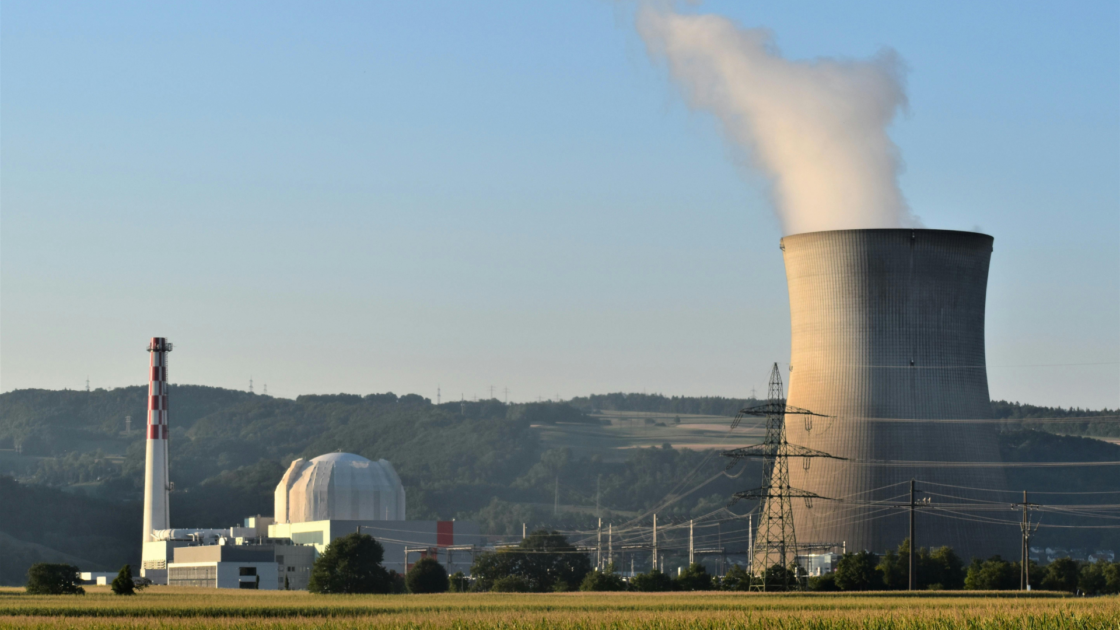Nuclear Energy and the Future: A Journey Through Material Innovation

Advancement of Nuclear Energy Through a Materials Engineering Perspective
Climate change and diminishing fossil fuels have fostered the development of cleaner and more sustainable energy sources since the past half a century. Advancements in nuclear energy have been gaining renewed attention as a source of stable and non-intermittent energy. Advanced nuclear reactors, heralded as the next generation of nuclear technology, promise to deliver safer, more efficient, and more sustainable energy. However, the success of these reactors hinges not only on innovative designs but also on the development of advanced materials that can withstand the extreme conditions within these reactors.
The Crucial Role of Materials in Nuclear Reactors
Materials in nuclear reactors are the backbone of their safe design, construction, operation, and post-operation processes. They are required to endure extreme conditions—high temperatures, intense radiation doses, and corrosive environments, thus resulting in degradation before their predicted service life. The materials used in these reactors must not only survive but thrive in these harsh conditions to ensure the reactor’s safety, efficiency, and longevity.
The components in nuclear reactors also experience a combination of forces like irradiation-creep, fatigue, hydrogen embrittlement, and corrosion.
In traditional nuclear reactors, materials like stainless steel and zirconium alloys have been the go-to choices. These materials have served well in the first and second generations of nuclear reactors, which operated at lower temperatures, pressures, and neutron fluxes. However, as the demands on reactors have increased with the advent of advanced designs, so too have the demands on the materials used to build them.
The Evolution of Reactor Materials
The evolution of materials in nuclear reactors is a story of constant innovation. As reactor designs have become more advanced, the materials used have had to keep pace. The first generations of reactors operated at relatively lower temperatures and faced lower levels of radiation compared to what is expected in today’s advanced designs. As a result, the materials used in these early reactors, while effective, are no longer sufficient for the demands of modern nuclear technology.
The third and fourth generations of nuclear reactors, including fast breeder reactors and Generation IV reactors, operate under much more extreme conditions. For instance, in a Gas-cooled Fast Reactor (GFR) or a Lead-cooled Fast Reactor (LFR), temperatures can exceed 800° C, and the materials used must resist radiation damage, creep, hydrogen embrittlement, and corrosion from hydrogen trapping, lead, or molten salts. Components used in these reactors, like heat exchangers, turbine casings, and blades, are also expected to undergo much harsher environments and operating conditions than conventional nuclear power plants. These plants would also have the scope of generating ‘Pink Hydrogen,’ which would further be used for localized electricity generation. However, such additional requirements increase the operational challenges faced by the in-reactor components significantly, hence strengthening the requirement for developing high-performance materials.
The presence of hydrogen, particularly in high-temperature environments, can exacerbate material degradation through mechanisms such as hydrogen embrittlement and accelerated corrosion, necessitating materials with exceptional resistance to these effects. This has spurred significant research and development efforts to identify and optimize new materials that can meet these demanding requirements. With materials like Eurofer 97 (a Reduced Activation Ferritic Martensitic steel) for high-temperature and irradiative environments, Nickel-based super-alloys for high-temperature and corrosive condition applications like turbine blades, Oxygen Dispersion Strengthened (ODS) alloys or Ceramic-Matrix Composites are being developed as potential fuel cladding material for generation 4 reactors, with Ceramic-Matrix composites being developed for Pebble Bed Reactor fuel.
Looking ahead, the role of materials in nuclear reactors becomes even more critical with the development of fusion reactors. Fusion reactors, which promise to revolutionize energy production by mimicking the process that powers the sun, require materials that can withstand conditions even more extreme than those in fission reactors. With some of the in-vessel (in-reactor) component temperatures reaching up to 1800 °C under peak operational loads, components like the Divertor not only face the highest heat loads but also undergo sputtering due to the helium ash and extreme neutron irradiation. Hence, materials like Tungsten are being studied for this application, along with the development of Tungsten-Ceramic-Matrix composites, which are also under consideration due to their high thermal conductivity, very high melting point, resistance to sputtering, and radiation-induced swelling. Water or Helium-cooled heat sink designs are under consideration to cool these components, generating material requirements like very high heat conductivity (more than 15 MW/m2).
One of the standout materials in this new era of nuclear technology is the Copper-Chromium-Zirconium (CuCrZr) alloy. This alloy has emerged as a critical material in the development of these heat sinks due to its unique combination of properties: high thermal conductivity, excellent mechanical strength, and remarkable resistance to radiation damage. It’s not just about conducting heat. The mechanical strength of CuCrZr alloys ensures that they can withstand the physical stresses of up to 180 MPa of the fusion reactor environment, specifically at maximum operating temperatures of 350 °C, while their resistance to radiation damage means they maintain their integrity over long periods. This durability is essential for the long-term reliability and safety of advanced reactors. CuCrZr alloys are just one example of how materials science is advancing to meet the needs of modern nuclear technology.
Conclusion: The Power of Material Innovation
Materials are the unsung heroes of nuclear technology, playing a vital role in the safety, efficiency, and sustainability of advanced reactors. As the world grapples with the need for clean, reliable energy, the development of advanced materials will be key to realizing the full potential of nuclear power.
About the Author:
Parth Kulkarni
Assistant Professor, The Open University & PhD Candidate, Imperial College London (Nuclear Energy Futures)
Contact: [email protected]
Original Article: View the original copy here
